The Economics of Green Energy - Is it More Expensive?
When we dive into the world of green energy, a burning question often arises: is it more expensive than traditional energy sources? The answer isn't as straightforward as a simple yes or no. It involves a multitude of factors that can sway the financial scales in either direction. While the initial investment in renewable energy technologies, such as solar panels and wind turbines, can seem daunting, the long-term benefits often outweigh these upfront costs. Think of it like buying a high-efficiency washing machine; you might spend more at first, but the savings on your utility bills can be substantial over time.
To truly understand the economics of green energy, we must consider several key aspects. First, let's look at the initial investments required for green technologies. These can include the costs of purchasing and installing solar panels, wind turbines, or geothermal systems. While these investments can be significant, they are often mitigated by various government incentives and subsidies designed to make green energy more accessible.
Next, we must evaluate the operational expenses. Unlike fossil fuels, which are subject to volatile market prices and geopolitical tensions, renewable energy sources like solar and wind have lower ongoing costs. Once installed, the sun shines and the wind blows without charging you a dime! This stability can lead to predictable energy costs, which is a huge advantage in today’s economy. Furthermore, the maintenance costs for renewable energy systems are generally lower than those for traditional energy sources, which often require expensive extraction and refinement processes.
Now, let’s take a moment to compare these costs with those of fossil fuels. The table below summarizes some of the key differences:
| Cost Aspect | Green Energy | Fossil Fuels |
|---|---|---|
| Initial Investment | Higher upfront costs | Lower upfront costs |
| Operational Expenses | Lower and more predictable | Volatile and often increasing |
| Maintenance Costs | Generally lower | Higher due to extraction and processing |
As we can see, while green energy may require a larger initial investment, its long-term operational and maintenance costs can be significantly lower. This brings us to the role of government incentives in making green energy more affordable. Many governments worldwide are offering tax credits and rebates for individuals and businesses that invest in renewable energy technologies. These financial tools can drastically reduce the upfront costs associated with green energy projects.
Additionally, various grants and funding opportunities are available to support the development of green energy initiatives. These can come from both governmental and non-governmental organizations, aiming to promote sustainability and innovation. By taking advantage of these resources, consumers can significantly lower their financial barriers to entry into the green energy market.
In conclusion, while the economics of green energy may initially appear to lean towards the expensive side, a deeper analysis reveals a more nuanced picture. The combination of initial investments, operational costs, government incentives, and long-term savings paints a compelling case for the adoption of renewable energy sources. So, is green energy more expensive? It depends on how you look at it. With the right information and resources, making the switch can be a financially savvy decision that benefits both your wallet and the planet.
- What are the main types of green energy?
Green energy primarily includes solar, wind, hydroelectric, geothermal, and biomass energy sources.
- How can I reduce the initial costs of switching to green energy?
Look into government incentives, tax credits, and financing options that can help offset the initial investment.
- Are there any long-term savings with green energy?
Yes, many users report lower energy bills and increased property values after switching to renewable energy sources.
- What challenges might I face when transitioning to green energy?
Challenges can include infrastructure needs, market readiness, and consumer perceptions about renewable energy.
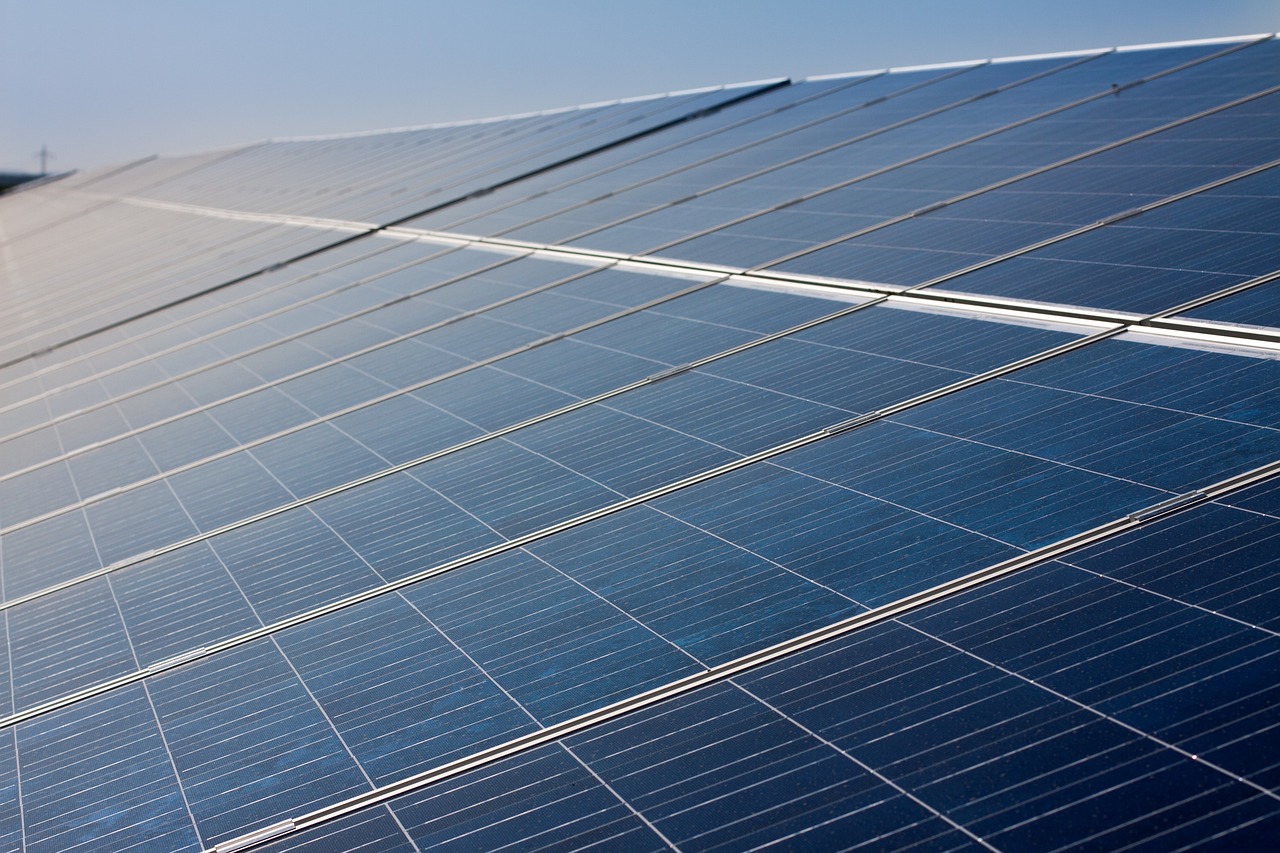
Understanding Green Energy Costs
When we dive into the world of green energy, one of the first questions that pops into our minds is: Are these technologies really worth the investment? The answer isn’t as straightforward as one might hope. To truly understand the costs associated with green energy, we need to break down several key components: initial investments, operational expenses, and maintenance costs. Each of these factors plays a crucial role in shaping the financial landscape of renewable energy.
Let’s start with initial investments. Green energy technologies, such as solar panels and wind turbines, often require a hefty upfront cost. For instance, installing solar panels on your home can range from $15,000 to $30,000 depending on the size and efficiency of the system. However, it’s essential to consider this as a long-term investment. Many homeowners report that they recoup these costs through energy savings and incentives within just a few years. In fact, studies show that solar energy can save homeowners an average of $20,000 over 20 years, making that initial investment seem far less daunting.
Next, we have operational expenses. These are the ongoing costs associated with running green energy systems. Fortunately, renewable energy sources tend to have lower operational costs compared to fossil fuels. For example, once a wind turbine is installed, the cost of maintaining it is relatively low, especially when you consider that wind energy doesn’t require fuel purchases. In contrast, traditional energy sources often face fluctuating fuel prices, which can significantly impact operational costs. This stability in operational expenses is one of the many reasons why transitioning to green energy is becoming increasingly appealing.
Now, let’s talk about maintenance costs. While green energy systems do require some maintenance, the frequency and cost of these services are generally lower than those for fossil fuel systems. For instance, solar panels typically need minimal maintenance—just a good cleaning occasionally to keep them efficient. On the other hand, coal or natural gas plants require regular inspections and repairs, which can add up quickly. This difference is crucial when considering the long-term financial implications of each energy source.
| Cost Component | Green Energy | Fossil Fuels |
|---|---|---|
| Initial Investment | High (but decreasing) | Moderate |
| Operational Expenses | Low | Variable (fuel-dependent) |
| Maintenance Costs | Low | High |
In conclusion, while the initial costs of green energy technologies can be intimidating, it’s vital to look at the bigger picture. The long-term savings on operational and maintenance expenses often outweigh the upfront investment. Moreover, as technology advances and more subsidies become available, these costs are expected to continue decreasing. So, are green energy solutions more expensive? The answer is nuanced, but with careful consideration, many would argue they are indeed a worthwhile investment for the future.

Comparative Analysis with Fossil Fuels
When it comes to comparing green energy with traditional fossil fuels, the conversation often swirls around costs. Many people assume that green energy is inherently more expensive, but that perception is rapidly changing. To truly grasp the financial implications, we need to peel back the layers and look at the various components that contribute to the overall cost of energy production and consumption.
One of the primary factors to consider is the initial investment. Renewable energy systems, such as solar panels and wind turbines, often require significant upfront capital. However, when we juxtapose that with fossil fuels, we see that the costs associated with drilling, extraction, and transportation can also be substantial. In fact, as fossil fuel reserves dwindle, the costs of extraction rise, making it less economically viable in the long run.
Moreover, we must consider operational expenses. Green energy technologies tend to have lower operational costs once they are up and running. For instance, solar panels require minimal maintenance and have no fuel costs, while fossil fuel plants incur ongoing expenses related to fuel procurement and emissions management. This creates a compelling argument for the long-term viability of green energy as a cost-effective solution.
Another crucial aspect to examine is the externalities associated with fossil fuels. These are costs that are not directly reflected in the price of energy but have significant societal impacts, such as health care costs from pollution and environmental degradation. When you factor in these hidden costs, the price of fossil fuels becomes even less attractive compared to green alternatives, which are generally cleaner and more sustainable.
Market volatility is yet another layer to this complex discussion. Fossil fuel prices are notoriously unstable, influenced by geopolitical tensions, supply chain disruptions, and fluctuating demand. This unpredictability can lead to sudden spikes in energy costs, creating financial strain for consumers and businesses alike. In contrast, the costs associated with renewable energy sources have been steadily decreasing, primarily due to advancements in technology and increased competition in the market.
| Cost Factor | Green Energy | Fossil Fuels |
|---|---|---|
| Initial Investment | High (solar, wind) | Variable (extraction, drilling) |
| Operational Expenses | Low (minimal maintenance) | High (fuel costs) |
| Externalities | Low (cleaner energy) | High (pollution, health costs) |
| Market Volatility | Stable | Unpredictable |
In conclusion, while the initial costs of green energy may appear daunting, a deeper analysis reveals a more favorable financial landscape. As technology advances and societal awareness of environmental issues grows, the transition to renewable energy sources not only becomes a moral imperative but also a financially sound decision. The future of energy is not just about being green; it's about being smart with our resources and investments.
- Is green energy really more expensive than fossil fuels? While initial investments may be higher, long-term savings and reduced external costs make green energy more economical.
- What are the hidden costs of fossil fuels? Externalities such as health care costs from pollution and environmental damage add significant hidden expenses to fossil fuel energy.
- How do government incentives affect green energy costs? Government subsidies and tax credits can significantly reduce the upfront costs associated with green energy investments.
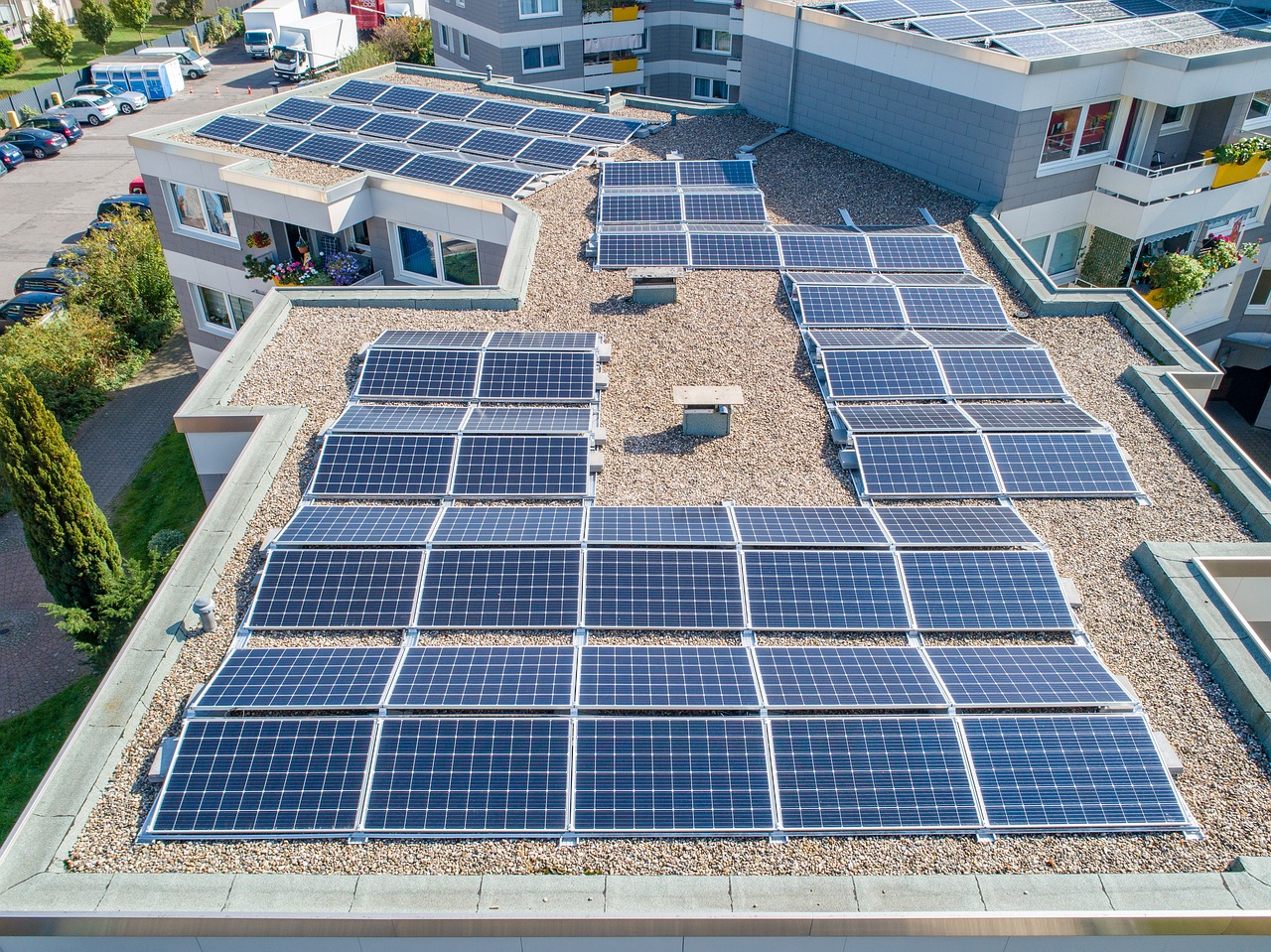
Government Incentives and Subsidies
When it comes to the financial landscape of green energy, play a crucial role in making these technologies more accessible and affordable for consumers and businesses alike. Imagine being able to reduce your energy costs significantly while also contributing to a healthier planet—this is the promise that green energy holds, and government support is often the key that unlocks this potential.
One of the most impactful ways governments promote the adoption of renewable energy is through tax credits and rebates. These financial tools help to lower the initial costs associated with installing solar panels or wind turbines. For instance, in the United States, the federal solar tax credit allows homeowners to deduct a substantial percentage of the installation costs from their federal taxes. This not only makes the upfront investment more palatable but also accelerates the payback period, allowing consumers to see savings sooner rather than later.
Moreover, various states offer additional incentives, creating a patchwork of opportunities for homeowners and businesses. For example, some states provide cash rebates for solar installations, while others may offer property tax exemptions for renewable energy systems. These incentives can significantly reduce the overall financial burden and encourage more people to make the switch to green energy.
In addition to tax credits, there are also grants and funding opportunities available from both governmental and non-governmental organizations. These grants can cover a portion of the costs associated with renewable energy projects, particularly for non-profits or community-based initiatives. For example, the U.S. Department of Energy often provides funding for innovative projects that aim to enhance energy efficiency and promote the use of renewable resources. Such funding not only helps to offset costs but also fosters innovation and research in the green energy sector.
It's essential to recognize that these incentives are not just about making green energy cheaper; they also aim to level the playing field against traditional fossil fuels. By offsetting the initial costs of renewable technologies, governments help consumers see the long-term value of switching to sustainable energy sources. This is particularly important when considering the external costs associated with fossil fuels, such as environmental degradation and health impacts, which are often not reflected in their market prices.
In summary, government incentives and subsidies are vital in driving the transition to green energy. They provide the necessary financial support that encourages consumers to invest in renewable technologies, ultimately leading to a more sustainable future. The combination of tax credits, rebates, grants, and funding opportunities not only makes green energy more affordable but also stimulates economic growth and job creation in the renewable sector.
- What types of government incentives are available for green energy?
There are various incentives, including tax credits, rebates, grants, and funding opportunities aimed at reducing the cost of renewable energy projects. - How do tax credits work for renewable energy?
Tax credits allow you to deduct a percentage of your renewable energy installation costs from your federal taxes, significantly lowering the upfront investment. - Are there state-specific incentives for green energy?
Yes, many states offer additional incentives, such as cash rebates and property tax exemptions, to further encourage the adoption of renewable energy. - Can non-profits access funding for renewable energy projects?
Absolutely! Many grants and funding opportunities are available specifically for non-profits and community initiatives focused on promoting green energy.

Tax Credits and Rebates
When it comes to making the switch to green energy, one of the most significant financial incentives available to consumers and businesses are . These financial tools are designed to alleviate the burden of initial investments in renewable energy technologies, making them more attractive options for everyone. Imagine this: you’re considering installing solar panels on your home, but the upfront costs seem daunting. Now, what if I told you that the government might help lighten that load? That’s where tax credits come into play!
Tax credits allow you to reduce your overall tax liability, meaning you could save a substantial amount of money. For instance, the federal solar tax credit, also known as the Investment Tax Credit (ITC), allows you to deduct a significant percentage of the cost of installing solar energy systems from your federal taxes. As of recent updates, this percentage is set at 26% for systems installed by the end of 2022, and it will gradually decrease thereafter. This means if you invest $20,000 in a solar system, you could potentially save $5,200 on your taxes!
On the other hand, rebates are typically offered by state or local governments, as well as utility companies, and they provide a direct reduction in the cost of the energy system. For example, if your state offers a rebate of $1,000 for solar panel installation, this amount is deducted from the total cost upfront, making it more affordable right from the start. These incentives vary widely depending on where you live, so it’s crucial to do your research. Some states even offer additional benefits, like performance-based incentives that pay you for the energy your system generates.
To give you a clearer picture of how these tax credits and rebates can stack up, here’s a simple table illustrating potential savings:
| Cost of Solar System | Federal Tax Credit (26%) | State Rebate | Total Savings |
|---|---|---|---|
| $20,000 | $5,200 | $1,000 | $6,200 |
| $15,000 | $3,900 | $800 | $4,700 |
| $10,000 | $2,600 | $500 | $3,100 |
As you can see, the combination of tax credits and rebates can significantly reduce the overall cost of transitioning to renewable energy. However, it’s not just about the immediate savings; these financial incentives also pave the way for broader adoption of green technologies, which can lead to a ripple effect in the economy. More installations mean more jobs in the renewable sector, further driving down costs through economies of scale.
In conclusion, tax credits and rebates are essential components of the green energy landscape. They not only make renewable energy more accessible but also serve as a catalyst for change in the energy market. So, if you’re contemplating a switch to green energy, be sure to explore all the financial incentives available to you. It could be the difference between merely dreaming of a sustainable future and actually making it a reality!
- What are tax credits? Tax credits are reductions in the amount of tax owed to the government, allowing taxpayers to save money on their tax bills.
- How do rebates work? Rebates are direct discounts offered by governments or utility companies on the purchase of renewable energy systems, reducing the upfront cost.
- Can I combine tax credits and rebates? Yes, in most cases, you can combine both to maximize your savings when investing in renewable energy.
- Are there any specific requirements to qualify for these incentives? Yes, eligibility can vary by state and type of technology, so it’s essential to check the specific guidelines in your area.
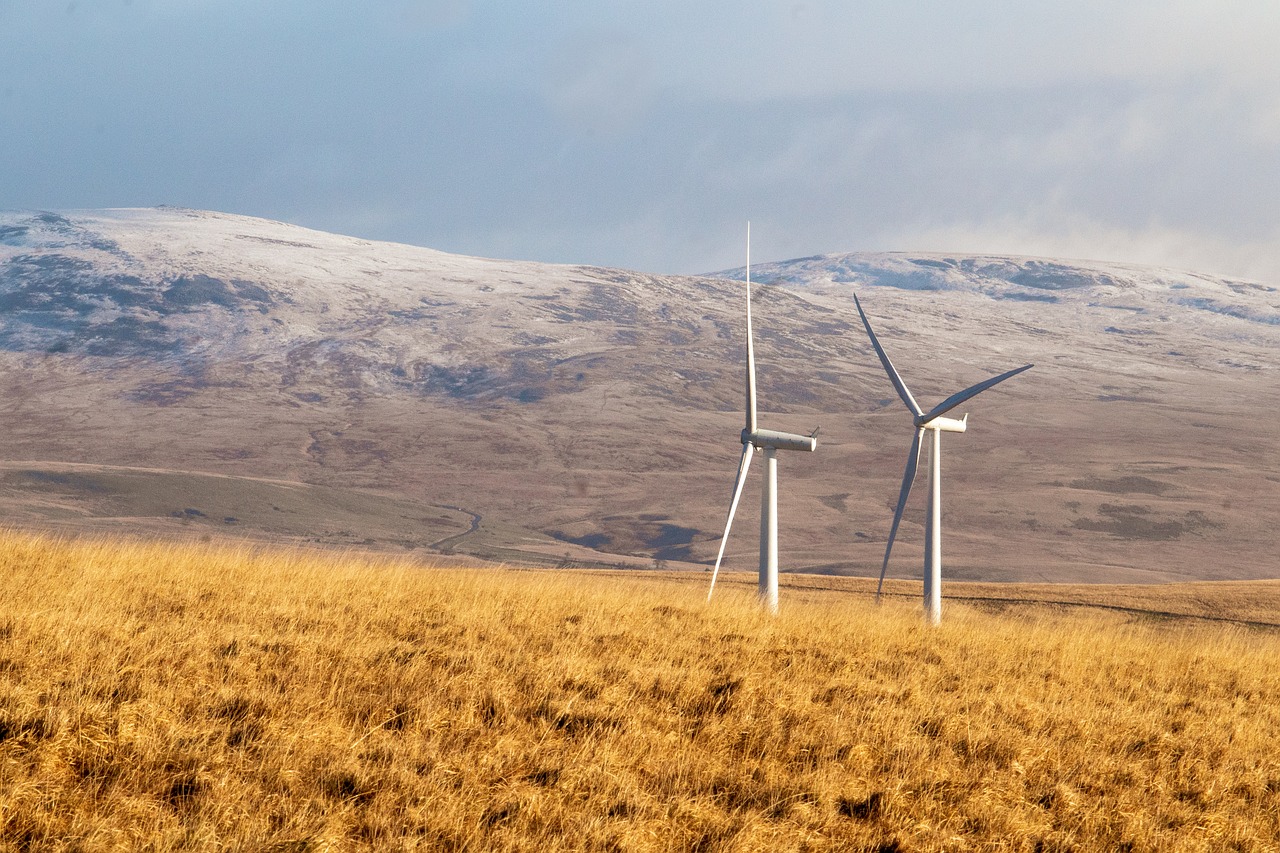
Grants and Funding Opportunities
When it comes to transitioning to green energy, one of the most significant hurdles is often the initial financial barrier. However, numerous are available to help alleviate these costs, making it easier for individuals and businesses alike to invest in sustainable energy solutions. Governments, non-profit organizations, and private entities are all stepping up to support the green revolution through various financial programs.
For instance, many state and federal programs offer grants specifically aimed at promoting renewable energy projects. These grants can cover a substantial portion of the costs associated with installing solar panels, wind turbines, or energy-efficient upgrades. In addition to grants, there are also low-interest loans and tax incentives designed to make green energy more financially accessible. This combination of funding sources can significantly reduce the financial burden on those looking to make the switch.
Moreover, organizations such as the Department of Energy (DOE) and various local governments provide funding opportunities tailored to specific projects. For example, the DOE offers programs that support research and development in renewable technologies, which can lead to innovative solutions that further drive down costs. Additionally, local utility companies may provide rebates for customers who invest in energy-efficient appliances or renewable energy systems, creating a win-win situation for both the environment and the consumer's wallet.
To give you a clearer picture, here's a quick overview of some common types of grants and funding opportunities available:
| Type of Funding | Description | Eligibility |
|---|---|---|
| Federal Grants | Monetary awards from the federal government to support renewable energy projects. | Varies by program; often requires a detailed project proposal. |
| State Incentives | Grants and tax credits offered by state governments for renewable energy investments. | Typically available to homeowners and businesses within the state. |
| Utility Rebates | Cash rebates offered by utility companies for energy-efficient upgrades. | Usually available to all customers who meet the program requirements. |
| Non-Profit Funding | Grants from non-profit organizations aimed at promoting sustainability. | Varies; often focused on community-based projects. |
In summary, the availability of grants and funding opportunities plays a crucial role in making green energy solutions more attainable. By leveraging these financial resources, individuals and businesses can not only reduce their upfront costs but also contribute to a more sustainable future. As the demand for renewable energy continues to grow, so too will the funding options available, making it an exciting time for those looking to invest in green technologies.
Q: What types of grants are available for green energy projects?
A: Various grants are available, including federal and state grants, utility rebates, and funding from non-profit organizations. Each program has its own eligibility criteria and application process.
Q: How can I find out about local funding opportunities?
A: Check with your local government’s energy office or website, utility companies, and community organizations that focus on sustainability. They often list available grants and incentives.
Q: Are there any tax benefits for investing in green energy?
A: Yes, many governments offer tax credits and deductions for renewable energy investments, which can significantly reduce the overall cost of installation.

Long-Term Financial Benefits
When it comes to the financial implications of adopting green energy, the conversation often revolves around initial costs. However, the real story lies in the long-term benefits that can significantly outweigh these upfront expenses. Imagine making an investment today that not only pays for itself over time but also contributes to a healthier planet. That's the promise of green energy!
One of the most compelling financial advantages of green energy is the potential for reduced energy bills. Once the initial investment is made—whether it's installing solar panels on your roof or investing in energy-efficient appliances—the ongoing costs tend to decrease. For instance, homeowners who switch to solar energy often report savings of up to 50% on their monthly electricity bills. This reduction can accumulate over the years, leading to substantial savings. In fact, according to a recent study, homeowners can save an average of $20,000 over 20 years by investing in solar energy.
But it doesn't stop there! The adoption of green energy can also lead to increased property values. Properties equipped with renewable energy systems, such as solar panels, are often more attractive to buyers. A home with a solar energy system can sell for as much as 4% more than similar homes without such features. This boost in property value can be a significant financial advantage for homeowners looking to sell in the future.
Moreover, the green energy sector is a growing field that is creating jobs at an impressive rate. According to the Bureau of Labor Statistics, jobs in renewable energy are expected to grow by 11% by 2028, which is faster than the average for all occupations. This growth not only provides employment opportunities but also stimulates local economies. Communities that embrace green energy often see a ripple effect, where increased job opportunities lead to more spending and investment in local businesses.
| Long-Term Benefits of Green Energy | Financial Impact |
|---|---|
| Reduced Energy Bills | Up to 50% savings monthly |
| Increased Property Values | 4% higher selling price |
| Job Creation | 11% growth in renewable energy jobs by 2028 |
In summary, while the initial costs of transitioning to green energy can be daunting, the long-term financial benefits paint a much brighter picture. From lower energy bills and increased property values to job creation, the advantages are clear. It's like planting a seed today that will grow into a sturdy tree, providing shade and fruit for years to come. So, if you're still on the fence about making the switch, consider the financial gains that await you down the road. The move towards green energy isn't just an environmental choice; it's a smart financial decision too!
- What are the initial costs of switching to green energy? Initial costs vary based on the technology and scale of the project, but many find that long-term savings outweigh these costs.
- How can I finance my green energy project? There are numerous financing options available, including government incentives, tax credits, and loans specifically for renewable energy projects.
- Will green energy increase the value of my home? Yes, homes with renewable energy systems often sell for more compared to traditional homes.
- What are the job prospects in the green energy sector? The green energy sector is experiencing rapid growth, with job opportunities expected to increase significantly in the coming years.
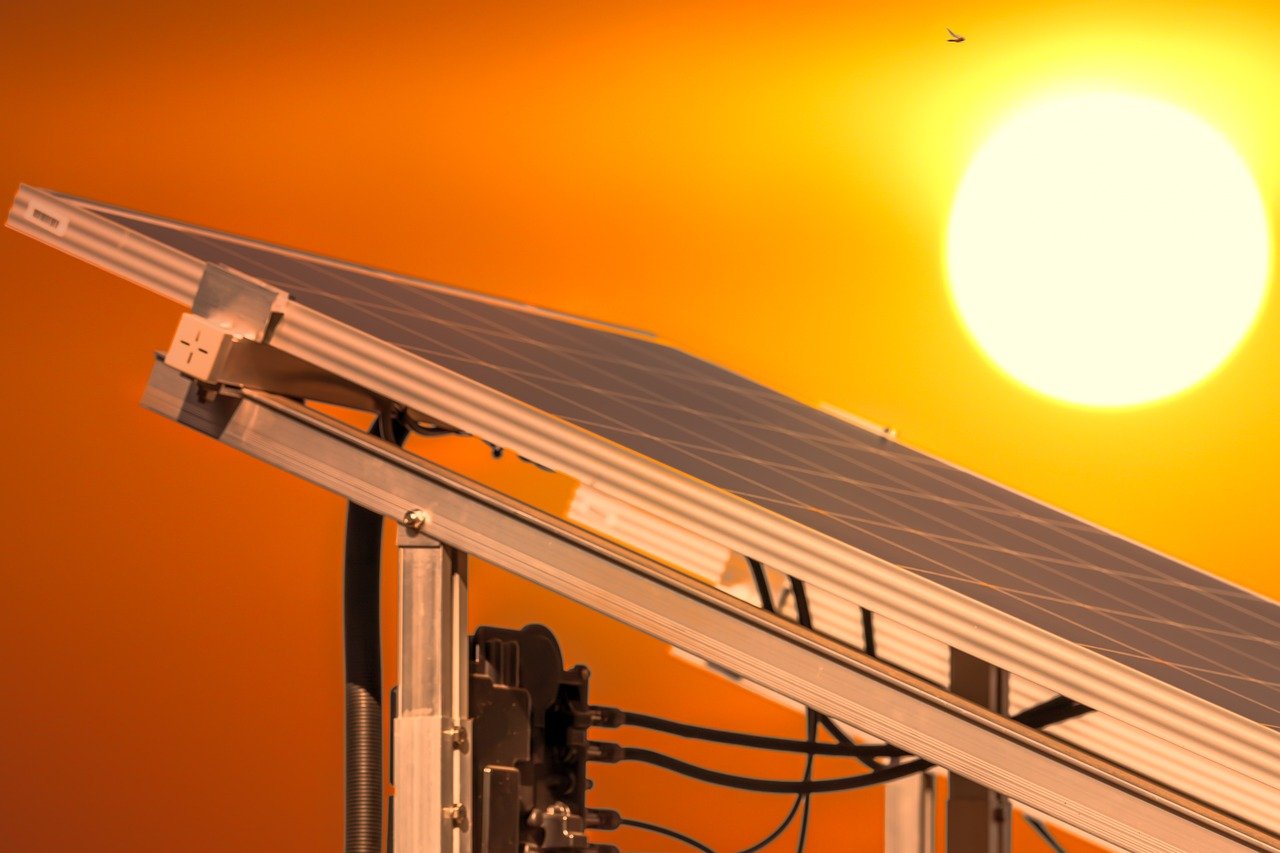
The Role of Technology in Cost Reduction
When it comes to the economics of green energy, one of the most exciting aspects is the role of technology in driving down costs. Over the past decade, we have witnessed a remarkable transformation in how renewable energy is produced and consumed. Innovations in technology have not only made green energy more efficient but have also significantly reduced the costs associated with its production. Imagine trying to power your home with outdated technology; it would be both inefficient and expensive. Now, think about how modern advancements have revolutionized this sector, making it possible for consumers to enjoy affordable and sustainable energy solutions.
For instance, advancements in solar panel technology have led to the development of more efficient photovoltaic cells. These new solar panels can convert sunlight into electricity at a much higher rate than their predecessors. This means that homeowners and businesses can generate more energy from the same amount of sunlight, effectively lowering their energy bills. According to recent studies, the cost of solar energy has dropped by over 80% since 2010, making it a viable alternative to fossil fuels.
Similarly, wind energy technology has seen significant improvements. Modern wind turbines are not only taller and more efficient but also equipped with advanced sensors and software that optimize their performance based on real-time weather data. This means that they can generate more electricity, even in less-than-ideal conditions. The result? Lower costs for consumers and a more stable energy supply. In fact, the cost of onshore wind energy has decreased by approximately 49% since 2009.
Another crucial aspect of reducing costs in green energy is the development of energy storage solutions. As we transition to a more renewable energy-focused grid, the ability to store energy becomes paramount. Technologies like lithium-ion batteries have made it possible to store excess energy generated during peak production times and release it when demand is high. This not only enhances the reliability of green energy systems but also helps to stabilize prices. With energy storage, consumers can take advantage of lower rates during off-peak hours, leading to even more savings.
To illustrate the impact of these technologies, consider the following table that compares the costs of traditional energy sources with recent advancements in green technologies:
| Energy Source | Cost per Megawatt Hour (MWh) | Cost Reduction (%) |
|---|---|---|
| Coal | $100 | 0% |
| Natural Gas | $70 | 0% |
| Solar Energy | $29 | 80% |
| Onshore Wind | $39 | 49% |
As shown in the table, the cost of solar and wind energy has plummeted, making them increasingly attractive options for consumers. This shift not only benefits individual households but also has broader implications for the economy. The more we invest in green technologies, the more jobs we create in the renewable sector. From research and development to manufacturing and installation, the green energy industry is proving to be a powerhouse of job creation.
In conclusion, technology plays a pivotal role in reducing the costs of green energy. With continuous advancements in solar, wind, and energy storage technologies, we are moving closer to a future where sustainable energy is not just an ideal but a reality. As consumers, we have the power to drive this change by embracing these innovations and advocating for policies that support further advancements in the renewable energy sector.
- What are the main technologies driving down green energy costs? Innovations in solar panels, wind turbines, and energy storage solutions are the primary technologies contributing to cost reductions.
- How much has the cost of solar energy decreased? The cost of solar energy has dropped by over 80% since 2010.
- What role do energy storage solutions play? Energy storage solutions help manage supply and demand, allowing consumers to save money by using stored energy during peak hours.
- Are there job opportunities in the green energy sector? Yes, the renewable energy sector is creating numerous jobs in various fields, including manufacturing, installation, and research.

Innovations in Solar and Wind Energy
In recent years, the landscape of renewable energy has undergone a remarkable transformation, particularly in the realms of solar and wind energy. These innovations are not just about harnessing natural resources; they're about maximizing efficiency and reducing costs, making green energy more accessible to everyone. Imagine a world where the sun and wind are not just free resources but also incredibly efficient energy sources that power our homes, businesses, and even our cars!
One of the most exciting advancements in solar energy is the development of perovskite solar cells. Unlike traditional silicon-based cells, perovskite cells are cheaper to produce and can achieve higher efficiency rates. Recent studies have shown that these cells can reach efficiencies of over 25%, compared to the 20% efficiency of conventional solar panels. This leap in technology not only reduces the cost per watt but also allows for more versatile applications, such as integrating solar cells into building materials like windows and roofs. Picture a skyscraper that generates its own energy while providing stunning views of the city skyline!
On the wind energy front, innovations in turbine design have led to significant improvements in energy capture. Modern turbines are now taller and equipped with larger blades, allowing them to harness wind at greater heights where it’s stronger and more consistent. For instance, the latest offshore wind farms are using turbines that can produce over 12 megawatts of power each. This is a game-changer, as it means fewer turbines are needed to produce the same amount of energy, reducing both the environmental impact and the costs associated with installation and maintenance.
The integration of smart technology is also revolutionizing how we utilize solar and wind energy. Smart grids and energy management systems allow for real-time monitoring and optimization of energy production and consumption. This means that energy generated from solar panels or wind turbines can be stored and used more efficiently, reducing waste and ensuring that power is available when it's needed most. Imagine a household where energy use is intelligently managed, adjusting to peak times and ensuring that no energy goes to waste!
Moreover, the development of energy storage solutions has been pivotal in enhancing the viability of renewable energy. Technologies such as lithium-ion batteries and emerging alternatives like solid-state batteries are making it possible to store excess energy generated during peak production times for use during periods of low production. This not only stabilizes the energy supply but also significantly reduces reliance on fossil fuels during high-demand periods.
As we embrace these innovations, it’s crucial to recognize that the journey toward a sustainable energy future is a collective effort. The collaboration between governments, private sectors, and consumers will determine how quickly and effectively we can transition to these cleaner energy sources. Are we ready to embrace the change, or will we let old habits hold us back? The future of energy depends on our willingness to innovate and adapt!
- What are perovskite solar cells? - These are a new type of solar cell that use a material called perovskite to achieve higher efficiency rates at lower costs compared to traditional solar cells.
- How do modern wind turbines differ from older models? - Modern turbines are taller and have larger blades, allowing them to capture more energy from higher, stronger winds, thus increasing efficiency.
- What role do energy storage solutions play in renewable energy? - Energy storage solutions allow excess energy generated during peak times to be stored and used later, helping to stabilize supply and reduce reliance on fossil fuels.

Energy Storage Solutions
In the world of green energy, one of the most pivotal advancements has been in . Imagine trying to fill a bathtub without a plug; that’s how renewable energy sources like solar and wind work without effective storage. They generate energy only when the sun shines or the wind blows, which can leave us high and dry during periods of low production. This is where energy storage comes into play, acting as a reservoir that captures excess energy and releases it when needed, ensuring a consistent and reliable power supply.
Energy storage technologies have evolved significantly over the past decade, making them more efficient and cost-effective. One of the most common forms of energy storage is the battery. Lithium-ion batteries, for instance, have become synonymous with energy storage due to their high energy density and decreasing costs. According to recent studies, the cost of lithium-ion batteries has dropped by nearly 90% since 2010, which has made them a viable option for both residential and commercial applications.
But batteries aren't the only game in town. Other innovative solutions include pumped hydro storage, where water is pumped uphill to a reservoir during periods of low demand and released to generate electricity when needed. Then there are flywheels, which store energy in the form of kinetic energy, and compressed air energy storage (CAES), which uses excess energy to compress air in underground caverns. Each of these technologies has its own advantages and challenges, but they all contribute to a more robust energy grid.
To give you a clearer picture, here’s a quick comparison of some popular energy storage technologies:
| Technology | Storage Capacity | Typical Use Case | Pros | Cons |
|---|---|---|---|---|
| Lithium-ion Batteries | High | Residential & Commercial | High efficiency, compact size | Limited lifespan, resource-intensive |
| Pumped Hydro | Very High | Utility-scale | Proven technology, large capacity | Geographically limited, environmental concerns |
| Flywheels | Medium | Frequency regulation | Fast response time, long cycle life | High initial cost, limited duration |
| Compressed Air | High | Utility-scale | Large capacity, long discharge times | Geographic limitations, efficiency losses |
As we integrate these energy storage solutions into our energy systems, we are not just enhancing the reliability of renewable energy; we are also paving the way for a more sustainable future. The ability to store energy means that we can harness renewable sources more effectively, reducing our dependence on fossil fuels and minimizing greenhouse gas emissions. However, the journey toward widespread adoption of these technologies is not without its challenges. Issues such as cost, infrastructure, and public acceptance must be addressed to fully realize the potential of energy storage in the green energy landscape.
- What are energy storage solutions? Energy storage solutions are technologies that capture and store energy for later use, ensuring a reliable power supply from renewable sources.
- Why are energy storage solutions important? They help to manage the intermittent nature of renewable energy, allowing for a consistent energy supply and reducing reliance on fossil fuels.
- What types of energy storage technologies are available? Common types include lithium-ion batteries, pumped hydro storage, flywheels, and compressed air energy storage.
- How do energy storage solutions affect costs? While the initial investment may be high, energy storage solutions can lead to long-term savings by reducing energy bills and increasing efficiency.
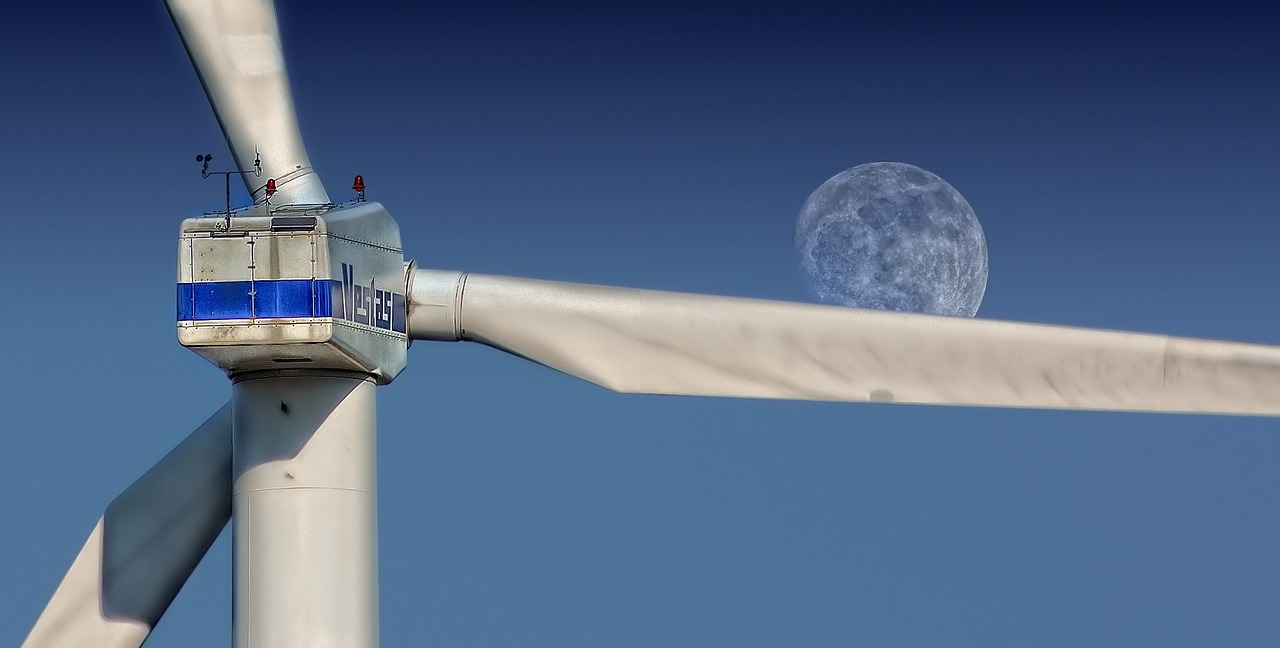
Challenges in Transitioning to Green Energy
Transitioning to green energy is like trying to steer a massive ship in a new direction; it requires considerable effort, time, and resources. While the benefits of adopting sustainable energy solutions are clear, the journey to get there is fraught with challenges that can slow down progress. One of the most significant hurdles is the infrastructure investment requirements. Modernizing our energy grids and building new renewable energy facilities demand substantial financial commitments. For instance, upgrading existing electrical grids to handle the influx of renewable energy sources, such as wind and solar, is not just a minor tweak; it’s akin to renovating an entire building while it’s still occupied. This can lead to disruptions and requires careful planning and execution.
Moreover, the market acceptance and consumer behavior play a crucial role in the pace of this transition. Many consumers remain skeptical about the reliability and affordability of green energy. This skepticism can stem from a lack of understanding or misinformation about renewable technologies. For instance, some people might believe that solar panels are prohibitively expensive or that wind energy is too unreliable. This perception can create a significant barrier to adoption, as consumers may hesitate to invest in green technologies due to fears of high costs or insufficient returns on investment.
Another critical challenge is the financial and logistical hurdles associated with implementing large-scale renewable energy projects. These projects often require extensive planning, coordination between various stakeholders, and sometimes even overcoming local opposition. For example, a solar farm might face pushback from local communities concerned about land use or aesthetic impacts. This kind of resistance can delay projects and increase costs, ultimately making it harder to transition to green energy.
To illustrate the complexities involved, consider the following table that summarizes some of the primary challenges faced in the transition to green energy:
| Challenge | Description |
|---|---|
| Infrastructure Investment | Significant funds are needed to upgrade grids and create new renewable energy facilities. |
| Market Acceptance | Consumer skepticism about the reliability and cost-effectiveness of green energy solutions. |
| Logistical Hurdles | Challenges in planning and coordinating large-scale projects, including local opposition. |
In addition to these challenges, the intermittency of renewable energy sources like solar and wind poses a significant issue. Unlike fossil fuels, which can provide a constant energy supply, renewable sources are dependent on environmental conditions. This variability can lead to periods of energy shortfall, necessitating the development of robust energy storage solutions. Without effective storage technologies, the reliability of green energy systems can be compromised, making it difficult for consumers and businesses to fully embrace these alternatives.
Ultimately, while the transition to green energy is fraught with challenges, it is essential to recognize that these obstacles are not insurmountable. With strategic investments, effective communication, and technological advancements, we can address these issues head-on. The journey may be long and winding, but the destination—a sustainable, green energy future—is worth the effort.
- What are the main challenges in transitioning to green energy? The main challenges include infrastructure investment requirements, market acceptance, logistical hurdles, and the intermittency of renewable energy sources.
- How can consumers overcome skepticism about green energy? Education and awareness campaigns can help inform consumers about the reliability and cost-effectiveness of renewable energy technologies.
- What role does government policy play in facilitating this transition? Government policies can provide incentives, subsidies, and support for infrastructure development, making green energy more accessible and affordable.
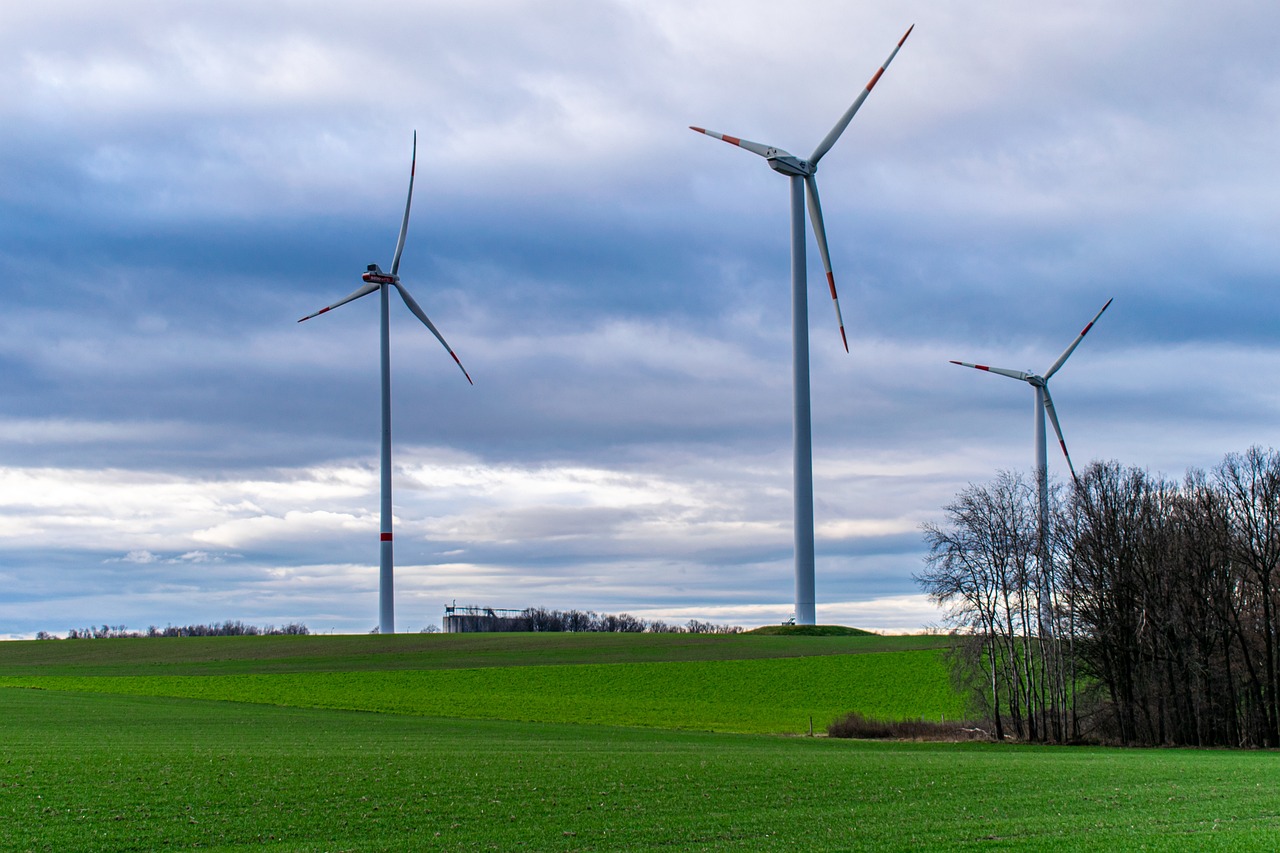
Infrastructure Investment Requirements
Transitioning to green energy is not just about installing solar panels and wind turbines; it requires a comprehensive overhaul of our existing infrastructure. Think of it like renovating an old house: you can't just slap on a fresh coat of paint and call it a day. You need a solid foundation, updated plumbing, and maybe even a new roof. Similarly, moving towards sustainable energy solutions necessitates significant investments in various infrastructure components to ensure reliability and efficiency.
First and foremost, we need to upgrade our energy grids. Many current grids were designed for traditional energy sources and are not equipped to handle the variable nature of renewable energy. Just imagine trying to fit a square peg into a round hole; it simply won't work! This means investing in smart grids that can manage the flow of energy more effectively, accommodating the ups and downs of solar and wind energy production.
Moreover, the transportation networks for renewable energy sources must be enhanced. For instance, wind farms are often located in remote areas where the wind is strongest, far from urban centers. This necessitates building new transmission lines to transport that energy to where it's needed most. According to a report by the International Renewable Energy Agency (IRENA), the global energy infrastructure investment could reach around $20 trillion by 2040, highlighting the scale of the challenge we face.
In addition to grid upgrades and transmission lines, energy storage systems are crucial. These systems allow us to store excess energy generated during peak production times and release it when demand is high. Without robust storage solutions, we risk wasting valuable energy or facing shortages during periods of high consumption. The development of large-scale battery storage facilities is one area where we see substantial investment needs.
Here’s a quick breakdown of the key infrastructure requirements for a successful transition to green energy:
| Infrastructure Component | Investment Needs | Importance |
|---|---|---|
| Energy Grids | High | Facilitates efficient energy distribution |
| Transmission Lines | Medium to High | Connects remote energy sources to consumers |
| Energy Storage Systems | High | Balances supply and demand effectively |
| Smart Metering Systems | Medium | Enhances consumer energy management |
In addition to these requirements, we also need to consider the logistical aspects of implementing such infrastructure changes. This includes regulatory approvals, land acquisition, and community engagement. It’s not just about the money; it’s about getting everyone on board and ensuring the changes benefit all stakeholders involved.
In conclusion, while the transition to green energy may seem daunting due to the substantial infrastructure investment required, the long-term benefits far outweigh the initial costs. By investing in the right infrastructure today, we pave the way for a sustainable and economically viable energy future. And who wouldn't want to be part of that exciting journey?
- What are the main challenges in upgrading energy infrastructure?
The main challenges include funding, regulatory hurdles, and public acceptance. - How long does it take to upgrade the energy grid?
Upgrading energy grids can take several years, depending on the scale of the project and local regulations. - Are there any government incentives for infrastructure investment?
Yes, many governments offer incentives such as tax credits and grants to encourage investment in renewable energy infrastructure.

Market Acceptance and Consumer Behavior
When it comes to the adoption of green energy, market acceptance and consumer behavior play pivotal roles. Imagine you’ve just bought a new electric vehicle (EV) because you want to do your part for the environment. But what if you discover that there are limited charging stations in your area? This scenario highlights the intricate dance between consumer choices and the infrastructure that supports them. Consumers are often hesitant to make the switch to renewable energy sources due to a mix of factors, including perceived costs, availability, and a general lack of understanding about the benefits of green energy.
One of the biggest hurdles is the perception of cost. Many people believe that green energy technologies, such as solar panels and wind turbines, are significantly more expensive than traditional fossil fuels. While it’s true that the initial investment can be higher, the long-term savings often outweigh these upfront costs. However, if consumers are unaware of these savings, they may stick with conventional energy sources out of fear of the unknown. This is where education and awareness campaigns come into play. By informing consumers about the financial incentives, government subsidies, and the decreasing costs of technology, we can shift perceptions and encourage more widespread adoption.
Moreover, market dynamics also influence consumer behavior. For instance, if local governments or utility companies offer incentives for using renewable energy, such as rebates or tax credits, consumers are more likely to consider making the switch. Additionally, as more people adopt green technologies, the social proof can create a ripple effect, encouraging others in the community to follow suit. It’s like a trend; once you see your neighbors going solar, you might think, “Hey, if they can do it, so can I!”
Another factor to consider is the availability of information. Consumers today are more informed than ever, thanks to the internet. However, the overwhelming amount of information can sometimes lead to confusion rather than clarity. Many potential adopters may struggle to differentiate between fact and fiction regarding green energy. This is where trusted sources and clear communication become essential. Companies that can effectively communicate the benefits of their products, backed by solid data and testimonials, will likely see higher acceptance rates.
In addition, the psychological aspect of consumer behavior cannot be overlooked. People often have emotional attachments to traditional energy sources, viewing them as reliable and familiar. Transitioning to green energy requires a leap of faith; it’s about changing long-held beliefs and embracing a new way of thinking. This shift can be facilitated through community initiatives that promote the benefits of renewable energy, such as local workshops or demonstrations that allow consumers to see the technology in action.
As we navigate this transition, it’s crucial to recognize that market acceptance is not just about the technology itself but also about how it fits into the broader societal context. It’s about creating an ecosystem where consumers feel empowered to make informed choices. For example, if consumers can access detailed comparisons of energy costs over time, they can make decisions that align with both their financial goals and their values.
In summary, understanding market acceptance and consumer behavior is essential for promoting green energy. By addressing misconceptions, providing clear information, and fostering community support, we can pave the way for a more sustainable future. Ultimately, the journey toward renewable energy is not just a technical challenge; it’s a social one that requires us to rethink our relationship with energy and embrace change.
- What are the main barriers to adopting green energy? The main barriers include high initial costs, lack of information, and limited infrastructure.
- How can government incentives help? Government incentives can lower upfront costs and make green technologies more attractive to consumers.
- What role does consumer education play? Educating consumers about the benefits and savings of green energy can shift perceptions and encourage adoption.
- Are there long-term savings with green energy? Yes, while the initial investment may be higher, the long-term savings on energy bills can be significant.
Frequently Asked Questions
- Is green energy more expensive than traditional energy sources?
The perception that green energy is more expensive than fossil fuels is shifting. While initial investments can be higher, the long-term savings from lower operational costs and reduced energy bills often outweigh these upfront expenses. Plus, as technology advances, the costs of green energy are continually decreasing, making it more competitive.
- What are the main costs associated with green energy?
When considering green energy, it’s essential to look at several costs: initial investments for installation, ongoing operational expenses, and maintenance costs. Each of these factors contributes to the overall financial landscape of green energy technologies, but many find that the long-term savings can be substantial.
- How do government incentives impact green energy adoption?
Government incentives, such as tax credits and rebates, play a crucial role in making green energy more affordable. These financial tools can significantly lower the upfront costs for consumers and businesses, encouraging the adoption of sustainable energy solutions.
- What types of grants are available for green energy projects?
Various grants and funding opportunities exist for green energy initiatives, provided by both governmental and non-governmental organizations. These funds aim to support innovations and projects that promote the use of renewable energy, making it easier for individuals and businesses to invest in green technologies.
- What long-term financial benefits can I expect from green energy?
Adopting green energy can lead to numerous long-term financial benefits, including reduced energy bills, increased property values, and job creation in the renewable sector. These advantages not only enhance personal finances but also contribute positively to the economy.
- How is technology helping to reduce the costs of green energy?
Technological advancements in solar panels, wind turbines, and energy storage solutions are driving down production costs and improving efficiency. These innovations make green energy more accessible and reliable, benefiting both consumers and businesses.
- What challenges exist in transitioning to green energy?
Transitioning to green energy comes with its set of challenges, including the need for significant infrastructure investments and market readiness. Additionally, public perception and consumer behavior can influence the adoption of green energy solutions, affecting pricing and investment decisions.
- Why is infrastructure investment important for green energy?
Infrastructure investments are critical for supporting the transition to green energy. This includes upgrading the electrical grid and developing transportation networks that facilitate the distribution of renewable energy sources, ensuring a seamless integration into existing systems.
- How do consumer perceptions affect green energy adoption?
Consumer perceptions play a significant role in the acceptance and adoption of green energy solutions. If people view renewable energy as a viable and beneficial option, they are more likely to invest in it, which can influence market dynamics and pricing across various sectors.



















